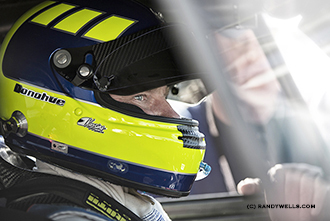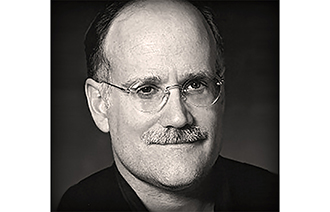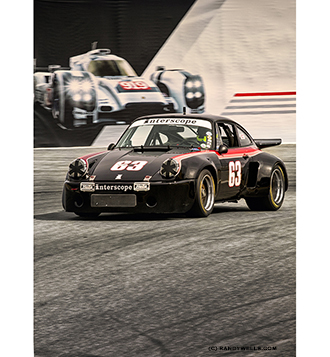TED FIELD AND DANNY ONGAIS
Taking the Long Road Home with a Porsche RSR
Article by Randy Wells, Photos by Randy Wells plus other unknown authors (A Story Never Published Until Now)
Forty-Five years ago Porsche’s RSR was the hot ticket for car racing. Of course, joining in the fun has always been easier if you are an heir to one of America’s famous family fortunes.
Ted Field was only 12 years old when his father, Marshall Field IV, passed away in Chicago. The family was a part of the department store dynasty that created a world of affluence. After moving to Alaska with his mother, the young Field decided California was where he wanted to be. So what do you do when you’re well off, single, 21, and living in southern California? Find yourself a Porsche of course – but not just any Porsche.
A new 1975 Porsche RSR fulfilled Field’s passion for fast cars, and that soon led him to form the Interscope Racing Team, where his all black racecars with red and pink graphics became famous contenders with the hire of veteran driver Danny Ongais.
Ongais came from much more humble beginnings, yet he was one of those rare sports car drivers who could approach the talent and speed of Peter Gregg, Hurley Haywood, Milt Minter, and Al Holbert. Known as “The Flying Hawaiianâ€, Ongais piloted several Porsches for Field over the next decade, the very first one being the 1975 Carrera RSR you see here.
“On-The-Gas†was shy and reserved off track, but that changed to an aggressive bravado on track with a pedal-to-the-metal approach. Ongais’ driving style suited the normally aspirated Interscope ‘75 RSR perfectly. And his pairing with the reclusive but intensely focused Field proved very successful.
In 1973, Gregg and Haywood had famously won the 24 Hours of Daytona in Porsche’s first version of the Carrera RSR. Gregg continued on with a similar car with a 2.8-liter motor and dominated the IMSA Camel GT and Trans-Am Championships that year.
For 1974 and 1975, Porsche’s RSRs were built on the short hood G-series 911 model with 3.0L engines. These were the most successful Group 4 cars of their era, dominating BMWs, Camaros and Corvettes. During the ‘74 IMSA season, RSRs won 83% of their races. And they took the top six places at the 1974 24 Hours of Daytona with Gregg and Haywood winning overall again in their Brumos entry. It’s easy to see why Field chose a 1975 RSR for himself and Ongais.
The Interscope ‘75 Carrera was equipped with an aluminum case engine featuring high-lift camshafts, special Bosch racing pump, slide valve injection, twin plug ignition, and a large capacity dry sump oil tank. Brakes were 917-30 style, and the Behr 917 oil cooler equipped nose opening was enlarged, as was the “whale tail†rear wing.
Flares and wheels were also bigger, being 10.5-inches wide at the front and a massive 14-inches at the back. Fiberglass panels were used for the ventilated wheel arch extensions, bumpers, front lid, and rear spoiler. The interior was stripped except for race seats and a ‘74 style three-spoke steering wheel.
Weighing just over 2,000 pounds, these RSRs were lightning fast with predictable handling and almost bulletproof reliability. The last dozen examples, including the late ‘74-build car featured here, were manufactured on a 1975 model year H-series platform.
What separates Interscope RSR #9115609118 from the rest is its fortuitous path. It was originally imported to Vasek Polak in Hermosa Beach, California, along with two other identical examples in white (#9119 and #9120). #9118 immediately entered Polak’s lease program with Field being an early customer. Since Jo Hoppen had referred him, Field was coached by one of the best Porsche drivers in the region, Milt Minter.
The bespectacled and heavily bearded Field was a quick learner and started racing the car in IMSA and Trans Am competition along with co-drivers Jon Woodner, Howdy Holmes, and Ongais. Like Field, Woodner and Holmes came from money. Woodner’s fortune derived from his father’s real estate developments, while Holmes was heir to the Jiffy line of baking goods.
As it turned out, the ‘75 Interscope RSR only ran four recorded races in IMSA.
At the 1976 Brainerd race on August 15 the RSR started 8th and finished 10th overall / 7th in class, its highest Trans Am finishing position ever. The Laguna Seca 100-mile contest and Daytona 250-mile IMSA GT finale followed in the fall of ‘76 with less than stellar results. In February 1977, wearing #63, it started the Daytona 24 Hours but did not finish due to an accident.
Time had moved on, and normally aspirated RSRs were being eclipsed by the more powerful turbocharged 934 and 935 Porsches. Interestingly, RSRs were still able to win Daytona and Sebring in early ‘77 with their better handling.
However, Field could see the writing on the wall, so he returned the RSR to Polak. What came next was a 2.1 “Baby†Turbo Carrera RSR. Then followed a Porsche 934 and a 934.5, which Ongais used in 1977 to win the IMSA GT class at Laguna Seca and to finish first overall at Brainerd. For the 1978-1982 seasons, Field and Ongais would continue to race 935s in Interscope colors.
In 1979, a mere two weeks after taking delivery of their black 935 with #O, Field, Ongais and Haywood won the 24 Hours of Daytona. By now, Ongais was under contract to Interscope, and he continued to drive for them in sports cars, Formula 5000, Indy Car, and Formula One.
All was going well until the 1981 Indianapolis 500 on May 24.
Interscope had entered an IP-1 Indy Car nicknamed “The Batmobile†for its signature black color and minimal graphics. Ongais qualified it 21st on the grid and charged up the field, taking the lead before pitting on lap 63. A stall during that stop cost him 46 seconds. Frustrated, Ongais was hard on the gas out of the pits, and moments later his car suddenly snapped sideways in turn 3.
The slide sent the IP-1 nose first into the concrete wall. It burst into flames, shedding wheels and body parts. Ongais was left exposed as the cockpit tore away. He somehow survived horrific injuries and recovered to race again, but it remained the most terrifying crash of his career.
Field had his left hand severely injured in 1975 when his car was being pulled off track at Riverside International Raceway, so he could relate. But the party would soon be over. Field teamed up with Bill Whittington in the 935 for the rest of ‘81, then Interscope switched to Lola T600s in mid ‘82. Racing stopped for Field soon after that.
Meanwhile, Polak had reportedly taken the Interscope 1975 RSR and painted it in a “Joe Camel†R.J. Reynolds/Viceroy livery with a white body and gold bumpers. In this form, the Porsche was leased once again. This time as the IMSA pace car for the Camel GT series in or around 1977.
Once that lease period ended, the pristine ‘75 RSR was said to have been returned to its original factory white color with Polak red and blue pin striping. In the process it gained wider rear flares and a 935 rear wing. Soon after it was sold to the Matsuda Porsche Museum of Japan where it resided during the ‘80s and ‘90s.
When Mr. Matsuda was informed he couldn’t use the name Porsche in connection with his museum, he sold all his cars and replaced them with Ferraris. So, in 2000, the RSR returned to the U.S. with it’s new owner Symbolic Motors of La Jolla, California. Kevin Jeannette of Gunnar Racing in Florida was the next owner, and he repainted the RSR to the Camel GT livery for his customer Joe Policastro, who took it to Rennsport Reunion II.
In 2005, the RSR, in “Joe Camel†colors, found a new home under the stewardship of well-known race car collector and racer, Jim Edwards. Edwards loved the fact that the car had remained relatively unmodified in its structure and still had it original motor and gearbox. Only 719 km showed on the broken speedo, and it came with the original 110-liter plastic tank and Heinzmann fire suppression system.
“I initially left this car in that state for the vintage races at Rennsport Reunion III and IV,†says Edwards. “The kids in the pits loved the cartoon-like ‘Joe Camel’ on the hood. However, I made the decision before last year’s RR V, to have the car converted back to the Field Interscope Racing Team livery with BBS center lock wheels for the first time in over 40 years.â€
At RR V, David Donohue, a Daytona 24 Hour winner and son of Mark Donohue, did driving duty for Edwards’ newly restored RSR. He qualified 8th on Saturday in the freshly restored Intersope RSR for the Group 5 ‘Carrera Trophy’ race but had to retire early on Sunday due to a sticky slide throttle.
“Driving this car was a wonderful experience simply because of what it represents, and the legacy that followed it in Interscope colors,†says Donohue. “One could say that any of these RSRs are special, and I would wholeheartedly agree. They have the classic Porsche boxer engine sound that howls at you and makes sure everyone knows you are there! It’s also there to make sure everyone knows when you miss a shift. Or make any kind of mistake!â€
“The controllability of the car is one thing that made it so popular in its day, and this example is no different,†Donohue states. “You don’t hear of an RSR being described as ‘evil’ unless there is something really wrong with it. This one is very inspiring to drive, but in a different way from the modern RS Spyder that I also drove this weekend. The RSR moves around a lot, but never seems to be numb on its way to take a set. The brakes are classic Porsche, solid with excellent feedback and modulation. This alone provides the most critical element of confidence.â€
Over the past thirty years, new opportunities have unfolded for Field and Ongais. Field, a self-described “maverickâ€, formed the media company Interscope Communications in the early ‘80s. In 1984 he sold his share of the family owned Chicago Sun-Times for over $250 million. Major acquisitions followed, including the purchase and sale of Panavision and the co-founding of Interscope Records in 1989. That venture made Field a media mogul with artists like Dr. Dre, Snoop Dogg, Eminem, and U2.
In 2001 Field left Interscope, Geffen, and A&M saying he was “anxious to become an entrepreneur again.†He currently lives in Beverly Hills and is chairman and CEO of Radar Pictures. Since 1984 he has produced over 50 major films, including Revenge of the Nerds, Mr. Holland’s Opus with Richard Dreyfuss and The Last Samurai with Tom Cruise.
Having recuperated from his leg and internal injuries, Ongais returned to IMSA for the ‘82 season where he took the podium on several occasions. He would soldier on in both IndyCars and sports cars all the way up until the late ‘80s, when he wrapped up a driving career that had started with dirt motorcycles and drag racing in the ‘50s. Now living in Hawaii, Ongais, the ultimate racer’s racer, was inducted into the Motorsports Hall of Fame in 2000.
# # #
Article Copyright 2020 Randy Wells. Images by Randy Copyright 2020 Randy Wells as noted. All Rights Reserved. Do Not Reproduce Any Text or Images Without Written Permission.
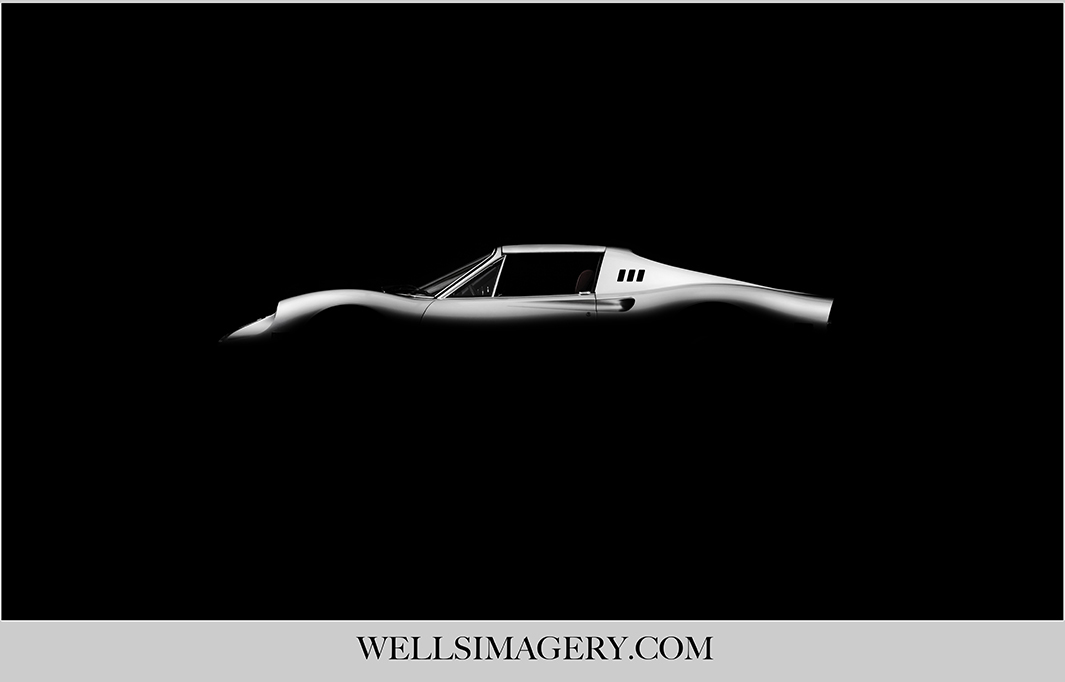
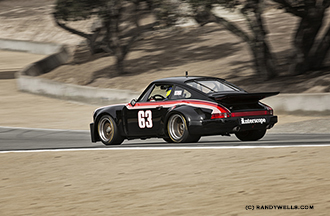
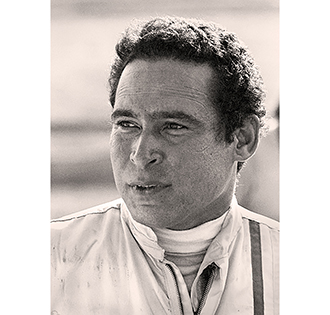
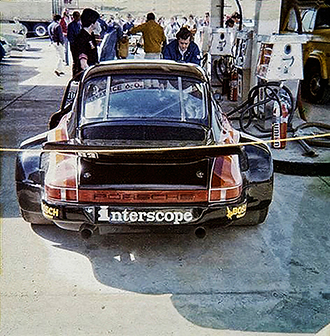
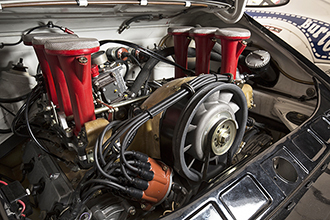
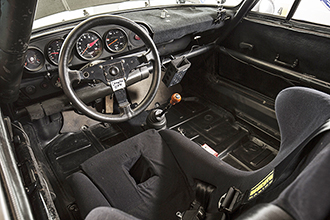
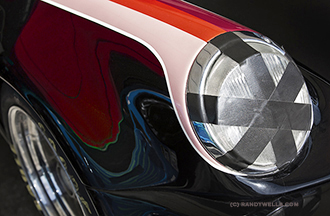
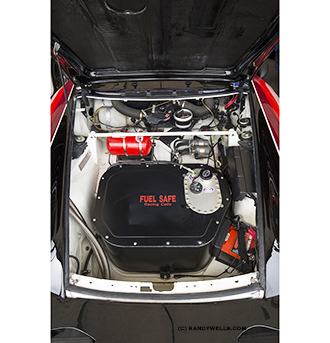

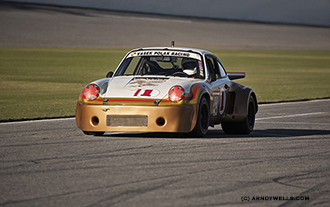
![6-matsuda01-4[2]p](https://randywells.com/blog/wp-content/uploads/2020/07/6-matsuda01-42p.jpg)
